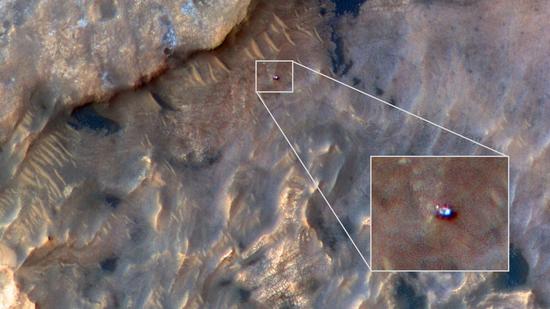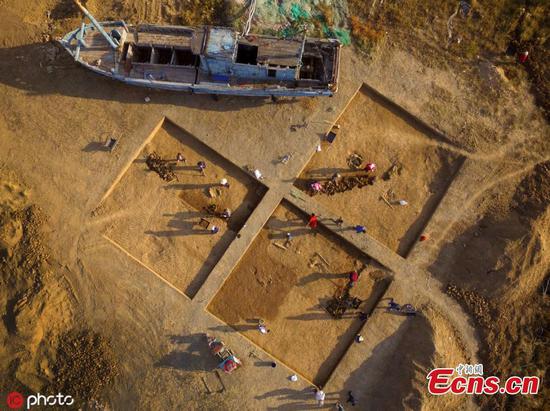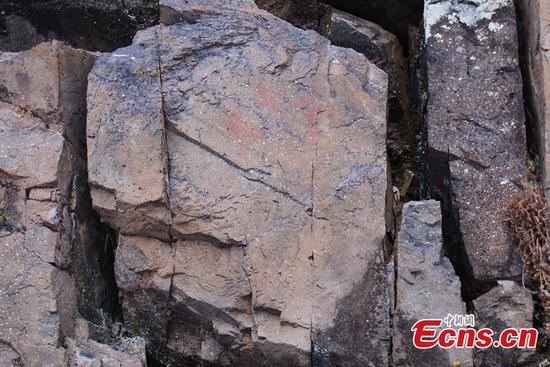
NASA's Curiosity Mars rover can be seen in this image taken from space on May 31, 2019, by the HiRISE camera aboard the Mars Reconnaissance Orbiter. In the image, Curiosity appears as a bluish speck. (Photo/NASA)
Complex international project aims to find out what happened on red planet
Scientists hope to bring evidence of life on Mars back to Earth in a future collaborative space mission that will draw on the finances and ingenuity of both NASA and the European Space Agency, also known as the ESA.
The ambitious undertaking will see engineers use robot rovers to collect rocks and other samples that will then be posted back to Earth via an unmanned spacecraft and a landing in a desert in the United States.
The Guardian newspaper described the mission as "one of the most complex robot space projects envisaged" and said it will cost billions of dollars.
The space agencies hope to bring 500 grams of Martian soil and rock back to Earth before sharing it with researchers around the world.
NASA has already given its backing to the project and the members of the ESA, which include the United Kingdom, Germany, and France, are expected to formally approve the mission at a meeting in Spain this week.
Jan Worner, the ESA's director general, said last week: "The Mars Sample Return is a key part of our future exploration program and I very much hope Europe's science ministers will back it. However, we should be clear that every step of the mission is going to be very challenging."
Scientists believe conditions billions of years ago on the red planet were similar to those found today on Earth and they want to find out what went wrong.
Up to now, scientists have only been able to study samples of Martian soil or rock by sending probes to Mars and analyzing things there, or by looking at fragments that arrive on Earth as meteorites.
To get a closer look, scientists will use an upgraded Mars rover that will land in Jezero crater in the Syrtis Major region of Mars in early 2021 to collect samples. A second spacecraft that will be built by the ESA will land on Mars to collect those samples and take them to a US-built rocket that will take them into orbit, from where they will be collected by yet another spacecraft and brought back to Earth.
Lewis Dartnell, an astrobiologist at the University of Westminster, told the Guardian newspaper: "The mission involves an incredibly complex sequence of manoeuvers, and there's so much that could go wrong. However, if we want to find evidence that there was once life on Mars, this is the sort of thing we are going to have to do. It will be worth the effort."
The Independent newspaper claimed the mission is likely to cost around$7 billion and take more than a decade to complete.
Andrew Coates, a space scientist at University College London, told Science Magazine the endeavor "has got to be one of the greatest missions of space exploration" and Brian Muirhead, lead planner for the project at NASA's Jet Propulsion Laboratory in California, said the achievement, if successful, would be comparable to that of putting a man on the moon.
Michael Meyer, NASA's Mars exploration scientist in Washington, told Science magazine the mission should be attempted now because of the excellent crop of experts working in the field at the moment.
"Everything is kind of lined up right now," he said.


















































